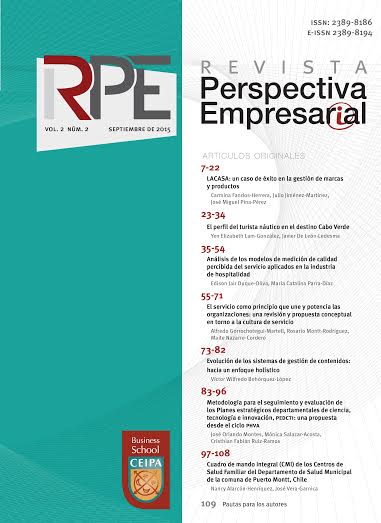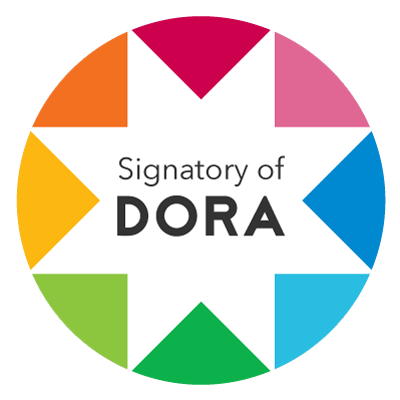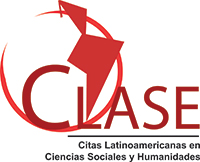Lacasa : A success case in brand and product management
LACASA: un caso de éxito en la gestión de marcas y productos
##plugins.themes.bootstrap3.article.main##
This article makes reference to the company lacasa, a leader in the Spanish chocolate market, to illustrate the importance of brand management and product launch as a goal to consolidate and attain corporate excellence. Through several group activities and an experiment, the need to undertake sub-brand strategies and to use brand characters for supplementing other marketing strategies implemented by the company has been confirmed.
Downloads
##plugins.themes.bootstrap3.article.details##
Aaker, D.A. 1996. "Measuring Brand Equity across Products and Markets", California Management Review, Vol. 38, núm. 3, pp. 102-120.
https://doi.org/10.2307/41165845 DOI: https://doi.org/10.2307/41165845
Aaker, J. 1997. "Dimensions of Brand Personality", Journal of Marketing Research, Vol. 24 (August), p. 347-356.
https://doi.org/10.1177/002224379703400304 DOI: https://doi.org/10.1177/002224379703400304
Aaker, J., Benet-Martinez, V. y Garolera, J. 2001. "Consumption Symbols as Carriers of Culture: A Study of Japanese and Spanish Brand Personality Constructs", Journal of Personality and Social Psychology, Vol. 81, núm. 3, pp. 492-508. DOI: https://doi.org/10.1037/0022-3514.81.3.492
https://doi.org/10.1037//0022-3514.81.3.492 DOI: https://doi.org/10.1037//0022-3514.81.3.492
Boisvert, J. y Burton, S. 2011. "Towards a Better Understanding of Factors Affecting Transfer of Brand Associations", Journal of Consumer Marketing, Vol. 28, núm. 1, pp. 57-66.
https://doi.org/10.1108/07363761111101958 DOI: https://doi.org/10.1108/07363761111101958
Carbonell, P., Rodriguez, A. y Munuera, J.L. 2004. "Technology Newness and Impact of Go/No-Go Criteria on New Product Success", Marketing Letters, Vol. 15, núm. 2-3, pp. 81-91.
https://doi.org/10.1023/B:MARK.0000047386.33282.51 DOI: https://doi.org/10.1023/B:MARK.0000047386.33282.51
Cayla, J. 2013. "Brand Mascots as Organisational Totems", Journal of Marketing Management, Vol. 29, núm. 1-2, pp. 86-104.
https://doi.org/10.1080/0267257X.2012.759991 DOI: https://doi.org/10.1080/0267257X.2012.759991
Chrysochou, P. 2010. "Food Health Branding: The Role of Marketing Mix Elements and Public Discourse in Conveying a Healthy Brand Image", Journal of Marketing Communications, Vol. 16, núm. 1-2, pp. 69-85.
https://doi.org/10.1080/13527260903342787 DOI: https://doi.org/10.1080/13527260903342787
Czellar, S. 2003. "Consumer Attitude towards Brand Extensions: An Integrative Model and Research Propositions", International Journal of Research in Marketing, Vol. 20, núm. 1, pp. 97-115.
https://doi.org/10.1016/S0167-8116(02)00124-6 DOI: https://doi.org/10.1016/S0167-8116(02)00124-6
Delbaere M., McQuarrie E.F. y Phillips B. J. 2011. "Personification in Advertising. Using a Visual Metaphor to Trigger Anthropomorphism", Journal of Advertising, Vol. 40, núm. 1 (spring), pp. 121-130.
https://doi.org/10.2753/JOA0091-3367400108 DOI: https://doi.org/10.2753/JOA0091-3367400108
Delgado, E., Fernández, E. y Honrubia, A. 2013. "Un Estudio Exploratorio sobre la Generación de Experiencias Afectivo-Sensoriales a través de los Personajes de Marca", Universa Business Review, núm. 37, pp. 32-51.
Fournier, S. 1998. "Consumers and their Brands: Developing Relationship Theory in Consumer Research", Journal of Consumer Research, Vol. 24 (March), pp. 343-373.
https://doi.org/10.1086/209515 DOI: https://doi.org/10.1086/209515
Gielens, K. 2012. "New Products, the Antidote to Private Label Growth? Who Is Fighting Whom?", Journal of Marketing Research, Vol. 49 (June), pp. 408-423.
https://doi.org/10.1509/jmr.10.0183 DOI: https://doi.org/10.1509/jmr.10.0183
Irisdata. 2013. Panel de marcas de chocolate, septiembre-diciembre, http://www.irisdata.org.
Jiménez, D. y Sanz-Valle, R. 2012. "Efectos de la Estrategia de Innovación en el Éxito de los Nuevos Productos: El Papel Moderador del Entorno", Revista Europea de Dirección y Economía de la Empresa, Vol. 21, núm. 4, pp. 323-332.
https://doi.org/10.1016/j.redee.2012.07.005 DOI: https://doi.org/10.1016/j.redee.2012.07.005
Jones, G. y Morgan, N.J. 1994. Adding Value: Brands and Marketing in
Food and Drink, London, Routledge.
Keller, K.L. (1993. "Conceptualizing, Measuring, and Managing Costumer-Based Brand Equity", Journal of Marketing, Vol. 57 (January), pp. 1-22.
https://doi.org/10.1177/002224299305700101 DOI: https://doi.org/10.1177/002224299305700101
Keller, K.L. 2013. Strategic Brand Management: Building, Measuring, and Managing Brand Equity, 4ª Edición, Essex, Pearson Education.
Landwehr, J.R., McGill, A.L. y Herrmann, A. 2011. "It's Got the Look: The Effect of Friendly and Aggressive 'Facial' Expressions on Product Liking and Sales", Journal of Marketing, Vol. 75, núm. 3, pp. 132-146.
https://doi.org/10.1509/jmkg.75.3.132 DOI: https://doi.org/10.1509/jmkg.75.3.132
Li, M.; Boyd, M. y Pai, J. 2011. "Factors Affecting Consumer Perceptions of Brand Name Food in Japan: An Ordered Probit Analysis", The Business Review, Vol. 18, núm. 1, pp. 8-13.
Lindstrom, M. 2010. Buyology. Barcelona, Gestión 2000.
Manning, L. 2007. "Food Safety and Brand Equity", British Food Journal, Vol. 109, núm. 7, pp. 496-510.
https://doi.org/10.1108/00070700710761491 DOI: https://doi.org/10.1108/00070700710761491
Martínez, E. y Pina, J.M. 2009. "Modeling the Brand Extensions' Influence on Brand Image", Journal of Business Research, Vol. 62, pp. 50-60.
https://doi.org/10.1016/j.jbusres.2008.01.006 DOI: https://doi.org/10.1016/j.jbusres.2008.01.006
Milberg, S.J., Park, C.W. y McCarthy, M.S. 1997. "Managing Negative Feedback Effects Associated with Brand Extensions: The Impact of Alternative Branding Strategies", Journal of Consumer Psychology, Vol. 6, núm. 2, pp. 119-140.
https://doi.org/10.1207/s15327663jcp0602_01 DOI: https://doi.org/10.1207/s15327663jcp0602_01
Ozretic-Dosen, D., Skare, V. y Krupka, Z. 2007. "Assessments of Country of Origin and Brand Cues in Evaluating a Croatian, Western and Eastern European Food Product", Journal of Business Research, Vol. 60, pp. 130-136.
https://doi.org/10.1016/j.jbusres.2006.10.011 DOI: https://doi.org/10.1016/j.jbusres.2006.10.011
Rabadán, R. y Alto, M. 2003. Técnicas cualitativas para investigación de mercados, Madrid, Pirámide.
Schlesinger, M.W. y Cervera, A. 2008. "Estudio Comparativo entre Personalidad de Marca Ideal vs. Percibida: Aplicación a las Compañías Aéreas", Innovar, Vol. 18, núm. 31, pp. 61-76.
Vranesevic, T. y Stancec, R. 2003. "The Effect of the Brand on Perceived Quality of Food Products", British Food Journal, Vol. 105, núm. 10-11, pp. 811-825.
https://doi.org/10.1108/00070700310511609 DOI: https://doi.org/10.1108/00070700310511609


































